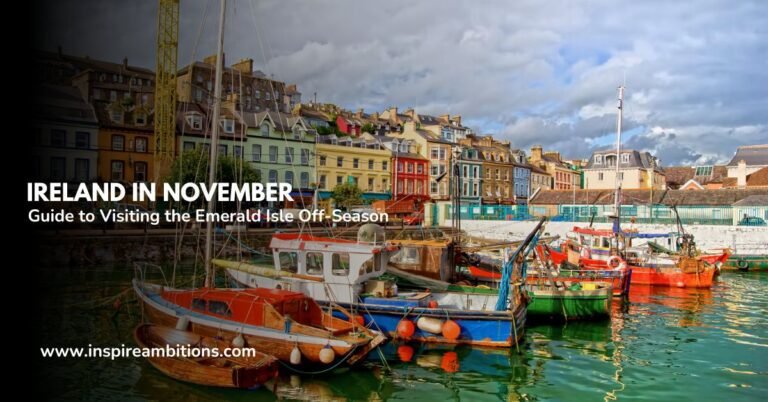Does It Snow in Ireland? Understanding Irish Winter Weather Patterns
Snow is a rare and enchanting sight in Ireland, where the winters often invite more rain than the fluffy white flakes many associate with the season. While Ireland does receive snow, it is not as common as in some other northern European countries. The snowfall in Ireland generally tends to be light and doesn’t typically last long once it lands on the ground.
In Ireland, more frequent snow can be found in the mountainous regions, where the conditions are suitable for a winter wonderland. If you’re looking to experience snow during your visit, the higher elevations offer the best chance.
However, even here, significant accumulation is uncommon. The moderate Irish climate, influenced by the Atlantic Ocean, keeps the winters relatively mild throughout most of the country. This means you’re unlikely to see large-scale snowfall except in occasional, brief cold snaps.
For those planning to travel to Ireland during the winter months, it’s wise to prepare for chilly and wet weather rather than a snowy escape.
Bringing a waterproof jacket and layers for warmth will ensure you’re ready to enjoy Ireland’s majestic landscape, regardless of whether you encounter that rare Irish snowfall.
Climatic Overview of Ireland
Before we dive into the specifics, it’s key for you to understand that Ireland’s climate is significantly influenced by the Atlantic Ocean, leading to moderate temperatures and varied precipitation throughout the year.
Influence of Gulf Stream and North Atlantic Drift
ال Gulf Stream و ال North Atlantic Drift play pivotal roles in shaping the weather in Ireland. These warm ocean currents are responsible for the milder temperatures, even in the heart of winter. As a result of these currents, the weather in Ireland remains more temperate than in other regions at similar latitudes.
Seasonal Weather Patterns and Temperature Fluctuations
Ireland experiences a temperate maritime climate characterized by its cool summers and mild winters. درجة حرارة fluctuations are generally moderate but can vary:
- صيف: Average temperatures hover around 15-20°C (59-68°F).
- شتاء: Average temperatures range from 4-8°C (39-46°F).
During the spring and autumn, the temperatures are usually mild, making these seasons quite pleasant.
Precipitation – Rain, Sleet, and Snow in Ireland
Rainfall is a staple of the Irish climate, with the west coast receiving more than the east due to its exposure to Atlantic weather systems. However, when it comes to snow in Ireland, it’s a less common occurrence:
- مطر: The country experiences frequent rain throughout the year.
- Snow: Generally limited to a few days per year, mainly during January and February.
من ناحية precipitation patterns, here’s a brief breakdown:
- Southwest: Around 5 days of snowfall annually.
- North Midlands: Up to 24 days of snowfall during winter months.
Remember, whether it’s rain or occasional snow, always be prepared for a change in weather when you’re in Ireland.
Snowfall in Ireland
شتاء in Ireland brings with it a picturesque dusting of snow, particularly evident in historical events and across certain regions. The impact of this weather on public services and tourism is both challenging and reasonable.
Historical Snowfall Events
Some of the most significant snowfall events in Ireland’s history occurred in winters, such as in 1947 و 1982, when heavy snow blanketed the country. In 1947, snow covered parts of Ireland for up to two months, and in 1982, a severe winter storm caused significant disruptions.
More recently, Storm Emma in 2018 brought about what was dubbed the ‘Beast from the East’, with significant snowfall and freezing temperatures.
Regional Snowfall Patterns
Let’s Discuss this :
الجبال
في ال Wicklow Mountains، ال Mourne Mountains في إيرلندا الشمالية، و ال MacGillycuddy Reeks في Kerry, snow is a common sight during winter. The high altitudes contribute to more consistent snow cover, particularly on peaks like Lugnaquilla.
Coastal vs. Inland
Areas like Connemara و ال coastal regions typically receive less snow due to the moderating effect of the ocean. In contrast, inland areas, specifically around Clones in County Monaghan, are more likely to experience wintry conditions.
Snowfall Impact on Public Services and Tourism
let’s discuss this:
Road Conditions: Snow can cause hazardous driving conditions, often leading to traffic delays and accidents. It’s not uncommon for snow in parts of دبلن, Galway، أو كورك to disrupt public transport services as well.
Accommodation & Tourism
While snow may complicate travel plans, it also presents a unique opportunity to visit Ireland in winter. Snow-dusted landscapes offer enchanting views, especially at sites like the Newgrange Passage tomb or during Christmas in Ireland. The chance to see the aurora borealis في Donegal also attracts visitors.
جولة على الأقدام
For the adventurous, hiking in the snow-covered Wicklow Mountains National Park or other mountainous regions can be magical, yet it’s important to be prepared for the challenges posed by winter weather.
Snowfall in Ireland usually doesn’t last long. Still, even a brief blanket of snow can transform the landscape into a winter wonderland, making winter an excellent time to visit Ireland for those seeking the beauty of the season.





